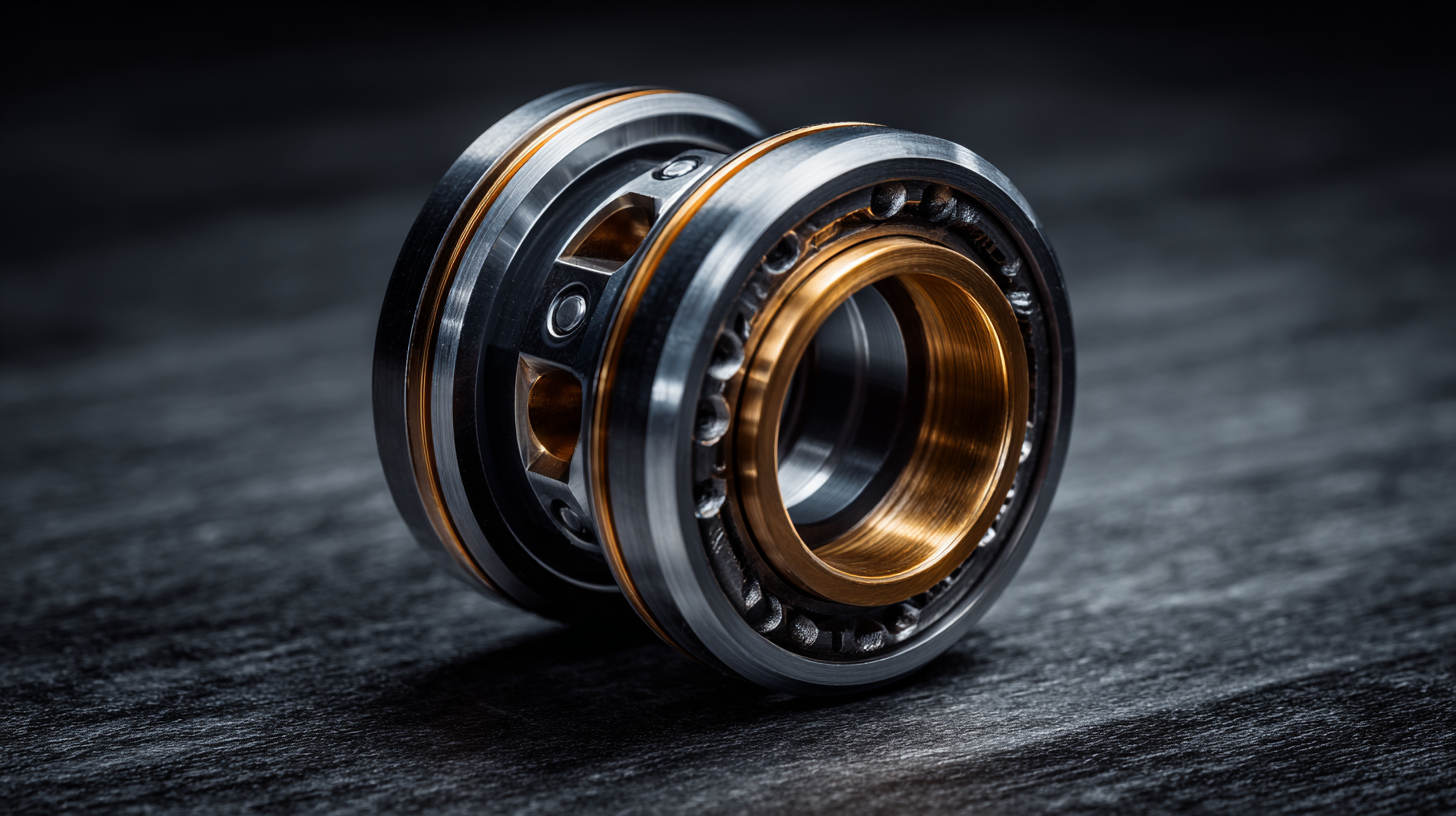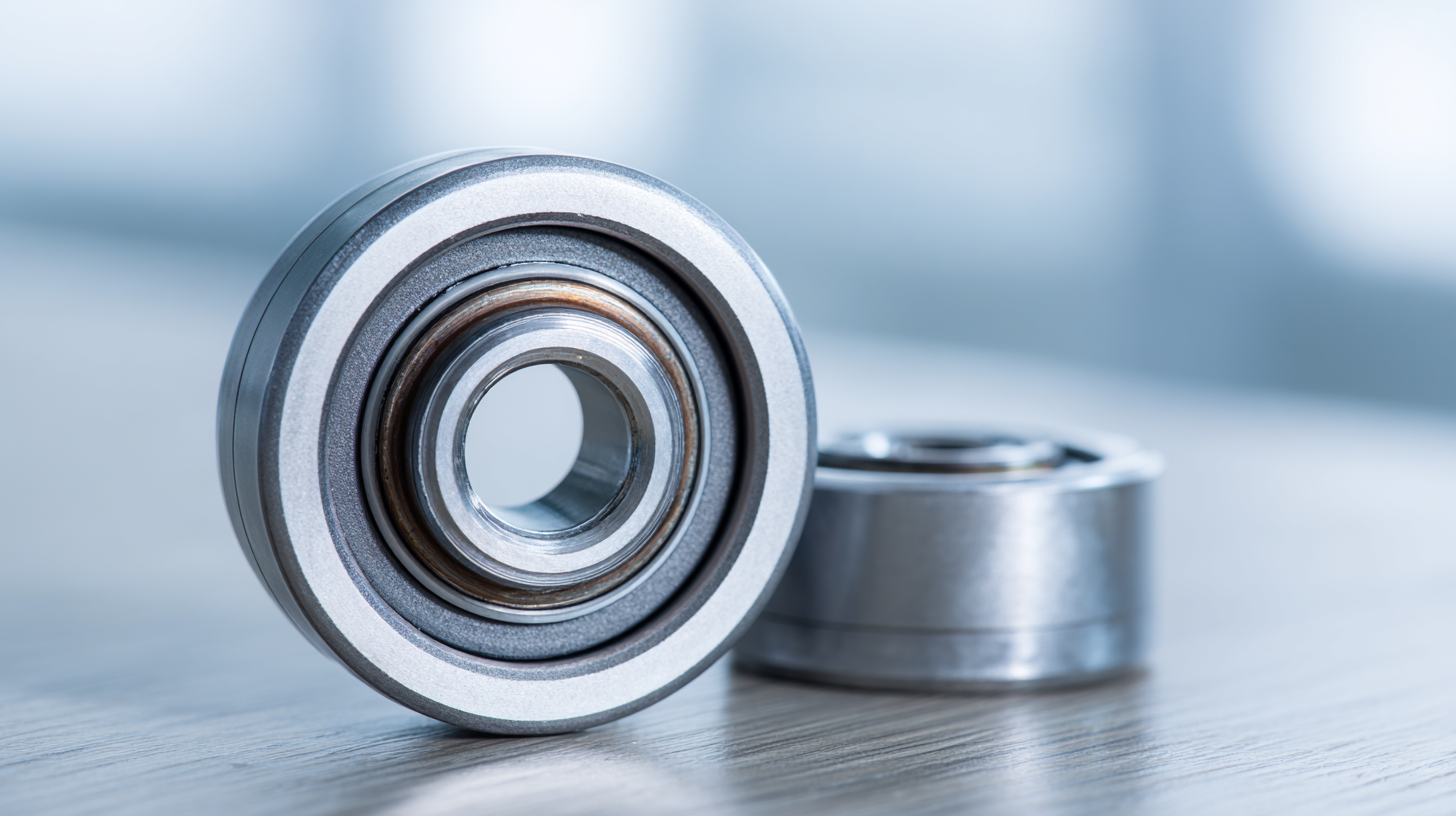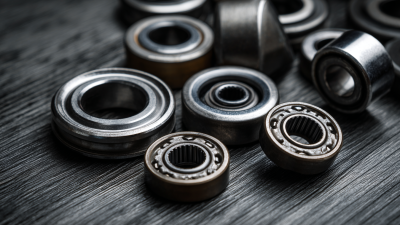2025 Top 10 Mounted Bearing Innovations You Need to Know
In the rapidly evolving landscape of industrial machinery, the significance of mounted bearings cannot be overstated. Mounted bearings are pivotal components that facilitate smooth rotational motion, enhance equipment lifespan, and reduce maintenance costs. According to a recent industry report by Markets and Markets, the global mounted bearing market is projected to reach $16.4 billion by 2025, growing at a CAGR of 6.2% from 2020 to 2025. This growth is driven by increased automation in manufacturing processes and heightened demand for reliable machinery in various sectors, including automotive, aerospace, and food processing.

As we approach 2025, several innovations in mounted bearing technology are set to revolutionize the industry. These advancements aim not only to boost performance but also to address challenges such as heat dissipation, contamination, and lubrication. The ongoing research and development efforts are expected to yield smarter and more efficient designs, providing users with enhanced reliability and lower total cost of ownership. This article will explore the top 10 mounted bearing innovations that industry stakeholders must be aware of, highlighting their potential impact on operational efficiency and productivity in an increasingly competitive market.
The Future of Mounted Bearings: Innovations Transforming Reliability and Efficiency
The future of mounted bearings is marked by remarkable innovations that are enhancing reliability and efficiency in various industries. Advanced materials, such as composites and self-lubricating polymers, are being integrated into bearing designs to reduce friction and extend lifespan. These materials not only withstand extreme conditions but also contribute to lower overall maintenance costs, benefiting organizations by minimizing downtime and improving productivity.
When considering mounted bearing innovations, it's essential to assess the specific needs of your application. Tips for optimizing bearing performance include:
- First, ensure proper alignment during installation, as misalignment can cause excessive wear.
- Second, regularly monitor bearing temperatures with sensors to detect any anomalies early, allowing for proactive maintenance.
- Lastly, consider regenerative braking systems in electric applications, which utilize mounted bearings effectively to enhance energy efficiency.
As the demand for sustainable solutions grows, innovations in mounted bearings are increasingly focusing on eco-friendly practices. Smart bearings equipped with IoT capabilities allow for real-time data analysis, increasing operational efficiency and facilitating predictive maintenance. By leveraging these advancements, businesses can not only improve their processes but also reduce their environmental footprint, aligning with global sustainability goals.
Key Features of Smart Mounted Bearings Revolutionizing Industrial Applications
The rise of smart mounted bearings is transforming industrial applications, integrating advanced technology with traditional mechanical components. One of the key features of these innovations is the incorporation of IoT (Internet of Things) capabilities, which enables real-time data collection and analysis. This connectivity allows for precise monitoring of performance metrics such as
temperature,
vibration, and
load, aiding in predictive maintenance. By identifying potential issues before they escalate, companies can reduce downtime and maintenance costs significantly.
 Another remarkable aspect of smart mounted bearings is their enhanced durability and efficiency. Many of these bearings are designed with self-lubricating materials and advanced coatings that extend their life cycle, allowing them to perform optimally in harsh environments. Additionally, their ability to adapt to varying operational conditions ensures consistent performance, contributing to the overall efficiency of machinery. As industries continue to embrace automation and data-driven decision-making, the integration of smart mounted bearings will play a pivotal role in maximizing productivity and fostering innovation across various sectors.
Another remarkable aspect of smart mounted bearings is their enhanced durability and efficiency. Many of these bearings are designed with self-lubricating materials and advanced coatings that extend their life cycle, allowing them to perform optimally in harsh environments. Additionally, their ability to adapt to varying operational conditions ensures consistent performance, contributing to the overall efficiency of machinery. As industries continue to embrace automation and data-driven decision-making, the integration of smart mounted bearings will play a pivotal role in maximizing productivity and fostering innovation across various sectors.
Impact of Advanced Materials on Mounted Bearing Lifespan and Performance
The longevity and efficiency of mounted bearings are significantly influenced by the advancements in materials used in their construction. Traditional bearing materials often lead to increased wear and tear, resulting in frequent replacements and higher operational costs. However, innovative materials such as ceramic composites and advanced polymers have emerged, enhancing the performance and lifespan of mounted bearings. These materials exhibit superior resistance to abrasion, temperature fluctuations, and corrosive environments, ultimately minimizing downtime and maintenance requirements.
Additionally, the use of self-lubricating materials has opened new avenues for improving bearing performance. By reducing friction at the interface, these materials help maintain optimal operating conditions even in extreme applications. This innovation not only preserves the integrity of the bearings but also increases efficiency, allowing machinery to operate at higher speeds and loads without the risk of failure.
As industries continue to push the boundaries of performance, the impact of advanced materials on mounted bearing technology will undoubtedly play a crucial role in driving future innovations.

How Predictive Maintenance is Enhancing the Reliability of Mounted Bearing Systems
Predictive maintenance has emerged as a game-changer in enhancing the reliability of mounted bearing systems, allowing manufacturers to circumvent unexpected failures and reduce downtime. According to a report by MarketsandMarkets, the predictive maintenance market is expected to grow from USD 4.4 billion in 2020 to USD 12.3 billion by 2026, at a CAGR of 18.4%. This substantial growth is driven by the increasing adoption of IoT technologies and advanced analytics that facilitate real-time monitoring of bearing performance.
By leveraging predictive maintenance, companies can analyze vibration, temperature, and operational data to identify potential issues before they escalate into more significant problems. For instance, a study published by the International Journal of Advanced Manufacturing Technology found that predictive maintenance strategies can reduce maintenance costs by up to 30% and extend equipment lifespan by 20-50%. Implementing these innovations not only enhances the reliability of mounted bearing systems but also optimizes operational efficiency, resulting in a more sustainable manufacturing process.
2025 Top 10 Mounted Bearing Innovations You Need to Know - How Predictive Maintenance is Enhancing the Reliability of Mounted Bearing Systems
| Innovation | Description | Benefits | Impact on Reliability |
|---|---|---|---|
| Smart Sensors | Sensors that monitor temperature, vibration, and load in real-time. | Early fault detection, proactive maintenance scheduling. | Increases uptime by 20% by reducing unexpected failures. |
| AI-based Analytics | Machine learning algorithms analyzing data patterns over time. | Improved decision-making based on predictive insights. | Enhances reliability by allowing timely interventions. |
| Self-lubricating Bearings | Bearings that automatically distribute lubricants to reduce wear. | Longer service life and lower maintenance costs. | Decreases failure rates due to wear and tear. |
| Wireless Monitoring | Remote monitoring capabilities for real-time trend analysis. | Reduce the need for manual checks and improve access to data. | Enhances operational reliability through continuous oversight. |
| Advanced Materials | Use of composites and specialized coatings to enhance strength. | More durable equipment that can withstand harsher conditions. | Lowers the likelihood of failure in extreme conditions. |
| Integrated Condition Monitoring Systems | Systems that consolidate data from various sources for analysis. | Holistic view of system health and performance. | Facilitates comprehensive reliability assessments. |
| Virtual Reality Training | Training programs utilizing VR simulations for maintenance teams. | Better training outcomes and quicker skill acquisition. | Reduces human error in maintenance procedures. |
| Predictive Maintenance Dashboards | User-friendly dashboards displaying critical maintenance KPIs. | Easier tracking of equipment status and following up on maintenance tasks. | Supports timely actions leading to increased reliability. |
| Blockchain Technology | Secure data sharing between manufacturers, suppliers, and operators. | Improved traceability and trust in maintenance processes. | Ensures reliability of parts and reduces counterfeit risks. |
| Enhanced Sealing Technologies | Innovative seals that prevent contaminants from entering bearings. | Extended service life and improved performance. | Reduces the risk of bearing failures due to contamination. |
The Role of IoT in Monitoring and Managing Mounted Bearing Operations
The Internet of Things (IoT) is revolutionizing the management and monitoring of mounted bearing operations, enhancing both efficiency and reliability in various industries. According to a report by MarketsandMarkets, the IoT in manufacturing market is projected to reach $216 billion by 2025, showcasing the growing importance of connected devices in optimizing operational processes. Mounted bearings, critical components in machinery, benefit significantly from IoT technologies, which allow for real-time monitoring of conditions such as temperature, vibration, and lubricant levels.
Utilizing IoT-enabled sensors, companies can collect data that facilitate predictive maintenance, reducing unexpected machine failures by up to 30%, as highlighted in a study by McKinsey. This proactive approach helps organizations minimize downtime and extend the lifespan of mounted bearings, which are often susceptible to wear and tear. Furthermore, the integration of IoT with advanced analytics enables organizations to make informed decisions based on predictive insights, thereby driving operational excellence and reducing overall maintenance costs. The implications of these innovations are profound, suggesting a fundamental shift in how industries approach machinery health management.
2025 Top 10 Mounted Bearing Innovations
This chart illustrates the projected advancements in mounted bearing technologies highlighting the role of IoT in monitoring and managing operations.
Related Posts
-

Exploring the Science Behind Miniature Bearings and Their Role in Modern Technology
-

How to Choose the Right Self Aligning Ball Bearing for Your Application
-

Understanding the Factors Influencing Roller Bearing Prices: A Comprehensive Guide
-

Exploring the Future of Machinery: The Role of Cylindrical Roller Bearings in Enhancing Performance
-

Phone
-

E-mail
-

Whatsapp
-

Wechat
Wechat





